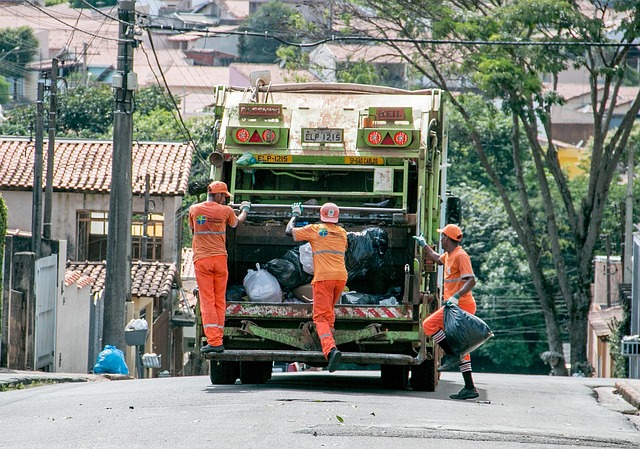In a world that hums with constant notifications, the term offline garbage collection has begun to resonate beyond the realm of software. It has taken on a new life as a metaphor for the personal cleansing that many feel is necessary when the digital stream saturates every aspect of modern existence. This article explores the concept, its origins, its practical implications, and the deep human need for moments of disconnection.
From Code to Consciousness
In programming, garbage collection is the process by which a system automatically reclaims memory that is no longer in use. It cleans the heap, ensuring that resources do not accumulate in useless, idle forms. The phrase was borrowed into everyday language to describe any activity that clears out unwanted or unused items. In a digital age, it has become a rallying cry for individuals seeking to purge the mental clutter created by endless streams of data.
Why the Digital Detox Movement Is Growing
Researchers have documented that excessive screen time is linked to decreased attention span, poorer sleep quality, and increased anxiety. The relentless flow of information—emails, social media updates, news alerts—creates a sensation akin to a full house of invisible baggage. The offline garbage collection movement posits that a scheduled period of disconnection can restore psychological equilibrium.
“When we let our minds breathe, we find the space where true creativity lives.” – Anonymous
Practical Steps for Effective Offline Garbage Collection
Transforming the idea into action involves more than just turning off the phone. It requires deliberate strategies that respect both personal habits and societal pressures.
1. Identify the Cluttered Zones
Start by mapping out the digital domains that weigh you down: social media, news apps, productivity tools, gaming platforms. Note the times of day when you feel most drained and the feelings that accompany that exhaustion.
2. Set a Timebound Digital Sabbatical
Choose a duration—one hour, a weekend, a month—based on your comfort level. Inform trusted friends and colleagues of your plan so that expectations are managed. Consider using a physical calendar to mark the offline period.
3. Replace the Habit, Not Just the Device
During the offline window, engage in activities that fill the void left by digital consumption. Read a paperback, practice meditation, walk in nature, or cook a new recipe. The key is to find an activity that brings genuine satisfaction.
4. Practice Mindful Consumption
After the offline phase, re-enter the digital world with a new set of rules: limit checking to two daily intervals, delete apps that don’t serve a clear purpose, and schedule breaks every 90 minutes. This mindfulness helps prevent the reaccumulation of virtual clutter.
The Psychological Mechanics of Digital Cleanse
When we allow our brains to rest from constant stimulation, several cognitive benefits arise. The prefrontal cortex, responsible for executive function, gets a chance to reset. Memory consolidation improves, making newly learned information more durable. Emotional regulation also sees a boost, as the brain can process experiences without the interference of external noise.
Neuroscientific Evidence
Studies on sleep deprivation and digital exposure have shown that extended screen use can lower gray matter volume in the hippocampus. Conversely, periods of digital abstention correlate with increased activity in brain regions associated with creative thinking and problem solving. These findings underscore the tangible benefits of offline garbage collection.
Societal Implications: Technology vs. Humanity
The debate between technological progress and human well-being has never been more urgent. While devices provide convenience, they also create an unrelenting rhythm that can erode interpersonal relationships, reduce community engagement, and distort the natural human timeline. The concept of offline garbage collection serves as a counterbalance, reminding society that human experience is not solely defined by connectivity.
The Workplace Dilemma
Many employers rely on instant messaging, cloud-based collaboration tools, and email as core communication channels. The expectation of constant availability can lead to burnout. Companies that adopt policies allowing scheduled offline periods often see increased productivity, higher employee satisfaction, and lower turnover.
Education and Learning
Digital tools have transformed classrooms, offering personalized learning pathways and real-time feedback. Yet the same tools can overwhelm students with notifications and deadlines. Structured offline periods—such as “screen-free Fridays”—have been linked to improved concentration and a greater sense of agency among learners.
Case Study: Communities That Embrace Digital Detox
Several small towns and intentional communities have built their culture around scheduled digital off-days. These places report higher rates of face-to-face interaction, lower rates of mental health issues, and a stronger sense of local identity. The success of these models demonstrates that technology need not dominate human life; it can coexist with deliberate periods of reflection and connection.
Digital Sabbath Practices
From the Christian concept of Sabbath to modern secular “no-phone” rules, the idea of setting aside time for rest has deep roots. The key difference in contemporary practice is the recognition that technology is now a pervasive part of everyday life, so intentional disconnection has become a form of resistance against digital saturation.
Potential Pitfalls and How to Avoid Them
Offline garbage collection can feel daunting. Some people worry about missing crucial updates or falling behind. By establishing clear communication channels before disconnecting—such as setting auto-responders or sharing a status update—those fears can be mitigated. It is also important to maintain realistic expectations; the goal is to reduce overload, not to eradicate all digital use forever.
Balancing Urgency and Peace
Not all digital interactions are equal. Critical tasks—like medical appointments or job deadlines—should be addressed promptly. Distinguishing between urgent and non-urgent communication is a skill that improves with practice. This discernment is a cornerstone of effective offline garbage collection.
Conclusion: The Future of Offline Living
As technology advances, the temptation to stay constantly connected grows stronger. Yet the human brain and society have evolved with cycles of activity and rest. Offline garbage collection offers a pragmatic framework to reclaim those essential cycles. By carving out intentional space for disconnection, individuals can restore mental clarity, nurture relationships, and cultivate a more balanced relationship with technology.
In the end, the practice is not a rebellion against progress but a recalibration of priorities. It asks us to recognize that digital tools are extensions of ourselves, not our masters. When we clear away the invisible clutter that accumulates in the background, we open room for the rich, unfiltered experiences that define humanity.




